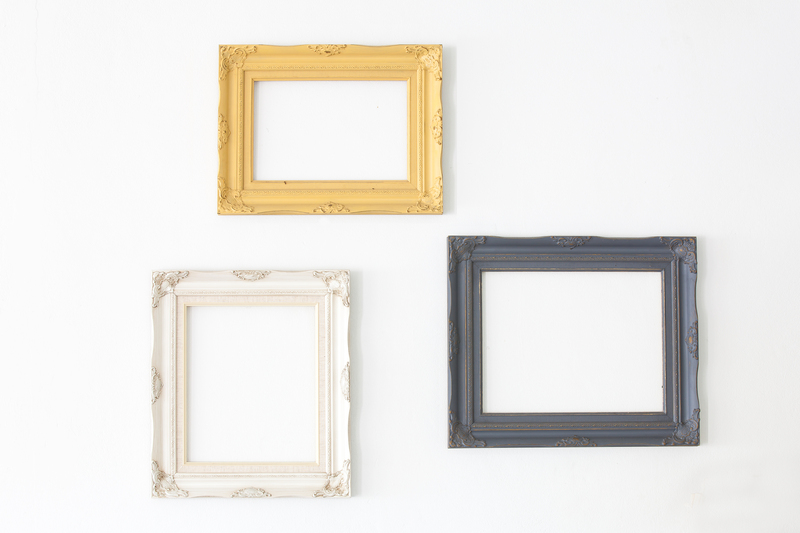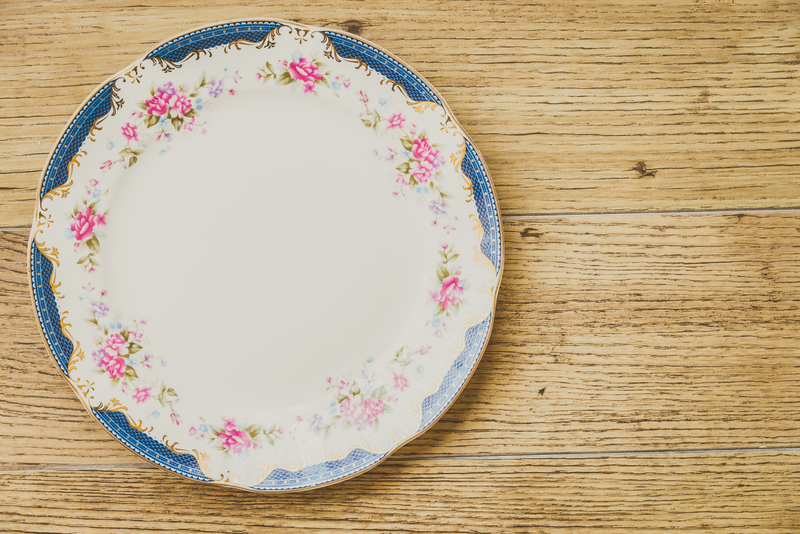Remake Rubbish with These Eco-Savvy Upcycling Concepts
Turning waste into wonder is not just a creative pursuit--it's a crucial part of eco-friendly living. Upcycling rubbish can reduce landfill load, save resources, and craft unique treasures for your home and life. Whether you're a sustainability enthusiast or just curious about new, practical ways to reuse, this comprehensive article dives deep into eco-upcycling ideas and techniques that can help you remake rubbish into remarkable and useful items.
Why Upcycling Matters: Transform Trash into Treasure
When we throw something away, it rarely disappears--it becomes a burden on the environment. Landfills overflow, natural resources diminish, and pollution escalates. Eco-savvy upcycling helps break this cycle by giving rubbish a new life. Not only does it keep waste out of landfills, it also saves energy that would be used manufacturing new items from scratch, effectively closing the resource loop.
- Conserves Resources: Less demand for raw materials.
- Reduces Carbon Footprint: Fewer production and transportation emissions.
- Sparks Creativity: Encourages innovation and problem-solving.
- Personalization: Creates one-of-a-kind pieces for your space.
- Cost-effective: Cuts down expenses on home goods and decor.
Remaking rubbish isn't just for DIY pros--anyone can join in to reimagine waste with some creative and actionable eco-upcycling concepts.

Eco-Friendly Upcycling Concepts for Every Room
1. Kitchen: Culinary Creations from Containers
The kitchen is a major source of waste that can be upcycled. Glass jars, tin cans, and old utensils can find second lives with a little vision.
- Jar Herb Gardens: Use clear glass jars as pots for growing fresh herbs on your windowsill. Customize with paint or twine for a rustic touch.
- Utensil Hooks: Old forks and spoons can be bent and screwed into a board as hooks for towels, aprons, or mugs.
- Cereal Box Drawer Organizers: Cut and cover boxes with decorative paper to organize kitchen drawers or pantry shelves.
- Can Lanterns: Punch patterns into tin cans, add candles, and hang for glowing evening ambiance.
2. Living Room: Furnishings from Forgotten Finds
Your living area can shine with upcycled charm and sustainable style.
- Pallet Coffee Tables: Sand down old pallets, stack or add legs, and treat with natural sealant for a sturdy, rustic table.
- Vintage Suitcase Shelving: Attach half a suitcase to your wall for quirky, eco-chic display shelves.
- Bottle Cap Art: Collect metal or plastic bottle caps to create colorful mosaics or wall hangings.
- Magazine Stool: Old, stacked magazines tied tightly with belts become a funky and functional seat.
3. Bedroom: Personalize with Upcycled Accents
- T-shirt Quilts: Stitch together well-loved shirts for a cozy memory blanket.
- Ladder Wardrobe: Prop up an old wooden ladder for hanging scarves, clothes, or even fairy lights.
- Drawer Planters: Repurpose small drawers into tabletop planters for succulents or fresh greens.
- Book Headboard: Arrange old hardcovers in a row and attach to create a literary headboard.
4. Outdoor Spaces: Reclaim Rubbish for the Garden
- Tire Flower Beds: Paint old tires in vivid colors and stack or arrange them for raised garden beds or planters.
- Bottle Pathways: Bury the necks of glass bottles to create shimmering borders for garden paths.
- CD Wind Spinners: Old, scratched CDs can be suspended to catch the light and keep birds away from fruit trees.
- Rain Chain from Cutlery: Link old spoons and forks together for a kinetic, musical rain chain.
The Art of Upcycling: How to Get Started
Step 1: Rethink Your Rubbish
When you look at what you're about to toss out, pause and ask: What could this become? Tin cans, fabric scraps, broken furniture, and even packaging materials can spark your next upcycling project.
Step 2: Gather Tools & Supplies
- Basic Toolkit: Hammer, nails, strong glue, scissors, screwdrivers--a simple set goes a long way.
- Decorative Accessories: Eco-friendly paints, twine, washi tape, fabric dyes, salvaged hardware.
- Protective Equipment: Gloves, safety glasses, dust mask (especially when cutting wood or sanding).
Step 3: Seek Inspiration
Browse online communities, upcycling blogs, and social media for ideas. Pinterest, Instagram, and YouTube are treasure troves for eco-savvy upcycling tutorials and before-and-after transformations.
Step 4: Start Simple, Scale Up
Begin with straightforward projects like jar organizers or magazine coasters. As your confidence grows, try more ambitious undertakings like pallet furniture, light fixtures, or textile rugs made from discarded clothes.
Eco-Intelligent Upcycling Concepts from Common Waste Items
Cardboard Innovations
- Storage Boxes: Cut and reinforce cardboard boxes, cover with fabric or paper for stylish closets or shelving units.
- Kids' Playhouses: Large boxes can become castles, cars, or shopfronts with a bit of imagination and paint.
- Desk Organizers: Layer and cut cardboard into compartments for organizing pens, notes, and gadgets.
Plastic Bottles: From Pollution to Possibilities
- Self-Watering Planters: Cut bottles in half, nest the upper part upside down into the bottom, insert a wick, and add soil and seeds.
- Bottle Bricks: Fill empty bottles with soft plastic wrappers to create "eco-bricks" for constructing stools, benches, or even small walls.
- Pendant Lights: Cut and shape bottles, then join the pieces for unique, modern lamp shades.
Furniture Revivals: Old to Outstanding
- Drawer Stairs: Use stacked, reclaimed drawers as steps for pets.
- Bedframe Benches: Transform part of an old bed into a garden bench or entryway seat, complete with the headboard for a dramatic backrest.
- Suitcase Tables: Add legs to large, vintage suitcases for movable side tables with hidden storage.
Electronics: Beyond E-Waste
- Light Bulb Terrariums: Carefully hollow out old incandescent bulbs and use them to house tiny plant ecosystems.
- Keyboard Jewelry: Pop out keys from broken keyboards to make geeky earrings or magnets.
- Hard Drive Clocks: Refit the metal platters and casing as a backdrop for clock mechanisms.
Tips for Eco-Conscious, Safe Upcycling
- Choose Materials Wisely: Some items (e.g., treated wood, certain plastics) contain toxins--check safety before repurposing inside your home.
- Clean Thoroughly: Disinfect and clean rubbish before upcycling, especially for items destined for kitchens or children's rooms.
- Seal and Protect: If using wood, metals, or porous materials, seal with non-toxic, environmentally friendly varnish to prolong life.
- Use Eco-Safe Adhesives: Opt for glues and paints with low VOCs (volatile organic compounds).
- Keep It Local: Source discarded items from your community to reduce transportation impact and make local connections.
Inspiring Real-World Examples of Rubbish Remade
Communities and artists all over the world are pioneering new upcycling trends to solve waste issues and make art:
- EcoBricks in South Africa: Volunteers collect non-recyclable plastics in bottles to use as building blocks for schools and community centers.
- Plastic Roadways in the Netherlands: Streets are paved with modular sections made from recycled and upcycled plastics for longer-lasting, lower-maintenance infrastructure.
- Recycled Art Parks: Creatives in cities like Paris and Tokyo construct public play structures, benches, and installations from upcycled industrial and consumer waste.
- DIY Community Repair Cafes: Local groups gather to mend, modify, and upcycle technology, clothing, and furniture--revitalizing what would be thrown away.

Frequently Asked Questions About Eco-Savvy Upcycling
Is upcycling really better than recycling?
Yes! Upcycling usually requires less energy than recycling and keeps items at their highest value for longer. While recycling often breaks materials down, upcycling finds new uses without extensive reprocessing, saving resources and time.
What are the challenges of eco-upcycling?
Some materials aren't safe or practical to repurpose, especially if broken or chemically treated. Finding inspiration or time for projects can be a hurdle, but starting small makes it manageable.
Can I save money by upcycling rubbish?
Absolutely. Upcycled furniture and decor often cost a fraction of store-bought items. Plus, you'll also save on disposal fees and decrease new purchases.
How can I encourage my family to join in?
Pick projects suitable for all ages--like decorating jars, simple cardboard crafts, or making garden planters. It's a great way to bond, educate kids about sustainability, and foster lifelong eco-habits.
Final Thoughts: Make the Most of Your Waste
Remaking rubbish with eco-savvy upcycling concepts goes beyond crafting: it's an actionable, hands-on approach to sustainability, creativity, and waste reduction. By viewing trash as a resource, we all can help shift the throwaway culture into one of renewal and ingenuity. From beginner to seasoned upcycler, every small project contributes to a greener, more imaginative world.
So the next time you're about to throw something away, rethink what it could become. Your next eco-savvy masterpiece might just be one piece of rubbish away.